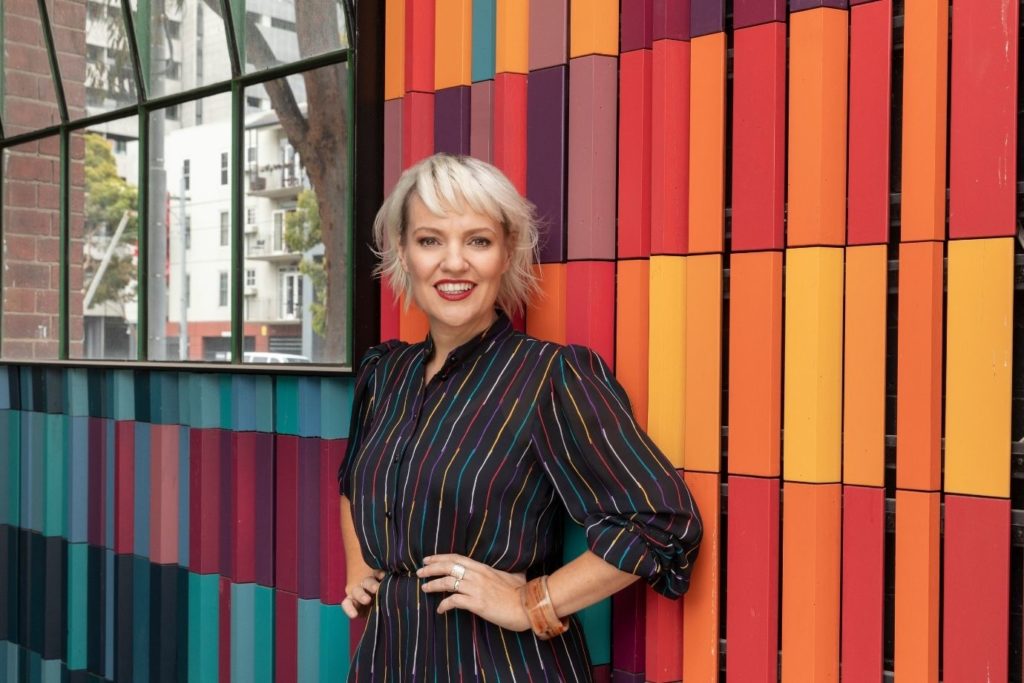As a child, and then as a teenager, I had always kept my body secret. While other girls threw their clothes off in the change rooms after sport, I would creep into a cubicle and lock the door. I did the same at the public pool. My body was a secret. But what happens to our bodies when they become part of the medical and healthcare systems? Our secret bodies become less our own and more the concern of a workforce.
When I was in my early twenties, I was diagnosed with a chronic illness, Crohn’s disease. Just under fifty per cent of Australians are living with a chronic condition. You’d never think it, because so many illnesses are unseen, endured in secrecy, and misunderstood.

After years of trying to manage an increasingly belligerent illness, the disease mutated and grew out of control. What had been a relatively contained disease when I was first diagnosed, had travelled down and formed fistulas throughout my perianal area, including my vagina.
This latest attack by my illness threatened to expose my body to the world. The disease was savaging the parts that have long been treated as shameful, both politically and culturally. It felt like it had made a grand assault on me as a singular, separate and private being.
And the horror of the pain, as infection grew and oozed out of me at such a rate that I had to wear maternity pads every day, brought with it a profound feeling of self-disgust. I would wave off any thoughts about my changing body, ‘who cared that people may have found me disgusting?’ But a disparaging voice inside me kept growing, ‘You are revolting,’ it would spit.
Correcting the fistulas and the damage they were causing required an intense regime. Firstly, there was dealing with the abscesses that were eating away at the thin films of skin around them. Then, when they were gone, there were the trails and pockets and holes they left behind, which needed surgery.
I spent a lot of time in hospital, and what was abundantly clear was that my body had become a specimen. Big groups of medical students would file into my room, gather around my bedside and observe me with an equal measure of fear and fascination, as if I was perched atop a Petri dish. I would lie there quietly, mostly naked, as they inspected the damaged parts. The doctor boss would encourage them not to be shy and to step forward into this sacred area, a space that was usually kept hidden. A space that was usually kept just for me.
For the trainee doctors, this processional was as much about acquiring the confidence to enter this space as it was about learning the oddities of my illness. The students needed to learn that this was now their space too. My body was their space, and this was an opportunity to rid themselves of any socialisation that suggested otherwise. At first, they would look at me warily, almost apologetically.
Soon enough, though, they would relax and become lost in the instruction that my body offered. They scribbled notes onto a pad, and suddenly it was as though I was not there at all. At some stage during the examination, one of the students would be chosen to put on medical gloves and touch me. There were never volunteers. Like two awkward strangers stuck in a lift, we tried to look anywhere but at each other.
A study conducted with medical students from the University of Newcastle in New South Wales looked into the teaching of ‘intimate physical examination skills’, and found it lacking:
‘Given the strength of the cultural rules about physical contact present in even a seemingly relaxed Western culture, it might be expected that students learning physical examination techniques would find performing physical examination uncomfortable… A number of participants said that on most occasions they had little idea of what they should be doing or looking for in intimate physical examinations…’
I was conscious of their discomfort. I would twist my head and smile limply to let them know that I was not hostile. I had given up the fight to keep my body to myself and silently agreed to the terms of our exchange. I had developed a way to understand what was happening and, in an act of survival, deliberately closed down the expressway that led from my body to me.
There’s a secret thread running between the self that lives somewhere deep inside and the body that lives in the outside world. One little snip, and I had separated them. It stopped being my body, and became just a cumbersome attachment, rude and antisocial. It was a body that I tried hard to avoid.
And while in one breath I was mortified that my body was being scrutinised at such close and clinical proximity, in another breath I was able to join the medical students in thinking of a body simply as a product of biology. As students rolled in and out, I was able to float away and detach myself. My body existed, but I was somewhere else. The me that lived down deep beneath my skin had left the scene a long time ago. When doctors described how they would operate or treat me, I would imagine it happening somewhere far away to a body that didn’t belong to me.
Our bodies are ours until they cross the threshold of healthcare, we’re we are suspended between the body that lives in the outside world and the body that we hold sacred, that belongs to just us. My challenge in having a body that is taken out of my control is finding a way to avoid disconnecting from it, which sometimes feels like the only option. But we need a partnership in this. Chronically ill and disabled people need to be met by a health care that recognises that they are working in the area of the sacred. That a body belongs to both a scientific world but also, it is the place that we call home.
Jacinta Parsons is a radio broadcaster and author of a new memoir Unseen (Affirm Press), out now.


